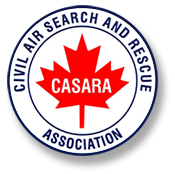Safety Issues
Safety Study on VFR Flight into Adverse Weather
74 Accidents occurred to pilots who lost control when the aircraft they were operating VFR was flown into adverse weather conditions. These accidents occur regularly, claiming a disproportionately high number of fatalities each year. They involve professional pilots, private pilots and business pilots who fly general aviation aircraft and chartered commercial aircraft, including fixed-wing aircraft and helicopters.
Although they involved only 352 of the 5,994 accidents recorded between 1976 and 1985 (6% of the total), they accounted for 23% of all fatal accidents and took the lives of 418 persons, or 26% of all fatalities during the ten year period. In other words, VFR-into-IMC accidents have claimed an annual proportion of aviation fatalities that has increased with time.
Areas of interest to the light plane pilot in this section include:
VFR Flight
Here you'll find discussions on such safety issues as:
VFR Weather Minima
Seventy-four accidents occurred to pilots who lost control of the aircraft in reduced forward visibility; 80% of these (59) occurred in uncontrolled airspace, where the visibility minimum is one mile. It is extremely difficult to judge one mile forward visibility from a moving aircraft. In some cases, the accidents occurred in weather conditions which met or exceeded the legal minima. In other cases, it is likely that the pilots had difficulty in accurately determining one mile flight visibility from the moving aircraft, and flew into conditions less than those prescribed by regulation.
A visibility of one mile leaves no margin for error, and permits pilots to fly in weather conditions in which there is inadequate outside reference to ensure consistent aircraft control.
VFR Minima Mountainous Terrain
51% of the Canadian VFR-into-IMC accidents occurred in mountainous or hilly terrain. VFR aircraft often transit the mountains through narrow valleys, where they may be subjected to strong winds and severe turbulence. Weather conditions which are highly changeable due to local effects, and variations in topography combine to create areas where VFR flights operate at high risk. Furthermore, the turning radius of many aircraft is increased at the higher altitudes at which they often operate through mountainous terrain.
Special VFR
This study found only six accidents involving SVFR operations. Four of the six occurred during daylight, four occurred when forward flight visibilities were reduced (as opposed to two in which the pilots flew into cloud) and four of them occurred after the pilots lost control of the aircraft. But
Canadian regulations make no distinction between day and night SVFR. The American and British regulations, restricting night SVFR to specially qualified pilots flying aircraft equipped for IFR flight, take account of the additional risk of operating in poor weather in low-light or no-light conditions.
Food for thought...
VFR-Over-The-Top
Two hundred sixty-six of the accidents (80%) occurred in the enroute phase of flight. The options available to the pilots who encountered the first indications of impending inclement weather included: continuing flight in the adverse conditions in the belief that conditions would improve; conducting a 180 degree turn; or "ducking under" and proceeding around obstacles and inclement weather with the intention of reversing course if conditions deteriorated further. The latter practice, commonly termed 'scud-running', has resulted in pilots regularly operating in weather conditions which jeopardize safe flight.
Night VFR
Which concluded that accidents occurring in other than daylight conditions comprised a disproportionately large number of VFR-into-IMC accidents. Approximately 10% of all Canadian accidents occur during the hours of darkness, which parallels estimates of the general level of night flying activity (also 10%). However, VFR-into-IMC accidents occurring during the hours of darkness accounted for almost 30% of the total study accidents.
This section looks into such factors as:
Night VFR Weather Minima
The high proportion of fatal night accidents attributable to adverse weather is in part the consequence of pilots initiating flight in weather conditions which are legally acceptable, but which deteriorate. The first indication to the night-flying pilot can be the inadvertent entry into IMC.
Night Endorsements
Twenty-four studied accidents which occurred at night resulted from a loss of aircraft control, often after the apparent onset of vertigo. To understand the circumstances of such occurrences, the training, experience and skills of the accident pilots were examined. The accident pilots had seldom obtained additional instrument training after acquiring the minimum experience for night endorsement.
Night Weather Briefing
In light conditions in which hazardous weather conditions can not be detected until they have been encountered, it is essential that pilots have appropriate information before initiating flight. Seventeen accidents that occurred in other-than-daylight conditions involved pilots who did not use available weather briefing facilities.
Licensing, Training & Experience
Examination of the accident data identified a large number which occurred en route to relatively inexperienced pilots, and a disproportionately high number which occurred to flying/school aircraft in B.C.
Conclusions
Accidents involving continued VFR-into-IMC account for a disproportionate number of fatalities each year. The causes and contributing factors to these accidents have recurring themes. These include inappropriate pilot qualifications or proficiency for the conditions encountered, and serious shortcomings in the permissible weather minima for VFR flight, in pilot training, and in pilot licence privileges. In some cases, current industry practices and limitations in aircraft equipment and weather briefing facilities exacerbated the circumstances leading up to the accidents. Since the phenomenon is not limited to any particular sector of the aviation community, diverse action ... will go a long way towards redressing the pervasive conditions leading to this type of accident which annually claims so many fatalities.
(Note: Many of the conclusions mentioned in this final section have now been addressed.)






